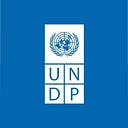What’s in a boundary?
Our third edition of Voyages explores and tries to break down borders and imagined constraints
As the sun goes down in Voskepar, in the Armenian region of Tavush, Armen Sahakyan instructs his family to switch off the lights and turn up the TV as snipers begin to shoot.
For this small village community situated close to the border with Azerbaijan, random violence has been nothing short of traumatizing. Having abandoned their fields, many farmers have taken cover and are confined to smaller land plots.
Voskepar is one of many border areas in Eastern Europe and Central Asia. Across the Black Sea, the Nistru river separates Moldova from the self-declared Republic of Transnistria, where the economy is tightly controlled and both cash and medicine are in short supply.
Every border creates its own dynamics, constraining freedom and at times complicating the use of shared resources to the point of straining neighborly relations. In Central Asia, control over water and agreements on hydropower have long been a source of contention that trickles down to the community level. In Moldova, a land exchange with Ukraine means farmers now have to cross a border to their fields.
Paradoxically, crossing borders can bring new opportunities. For Afghan women, walking into Tajikistan is a chance to trade and bring a salary home. Improved crossing facilities means businesses benefit on both sides of the Armenia-Georgia border.
Often though, it doesn’t take a physical fence to create lines that cannot be crossed. Many of the boundaries we experience are artificially created by societal habits and deep-seated beliefs.
In many countries around the globe, domestic violence is often viewed as justified or normal. This causes many women to opt for the safety of remaining silent. It takes courage to break this cycle, but in Bosnia and Herzegovina women’s police networks are tackling the boundaries from all sides. They’re training fellow officers on how to handle domestic violence cases, while also waging a wider battle from within male-dominated law enforcement for a more equal society.
Fighting for a societal paradigm changes — like the gender pay gap, LGBTI rights or Roma inclusion — requires breaking the chains of convention. This is the only way to create a safe space for individuals to live without fear and to thrive, and to shift traditions and infrastructures.
That’s what all of the characters in this edition of Voyages have in common. They are fighting not only to adapt, but also to remove barriers and expand horizons.
In North Macedonia, one man’s fight is helping to save endangered species of vultures. Their ecosystem was named a protected area but on paper only, and the balance of nature is threatened. Across the Western Balkans, villagers are creating new sources of revenue out of an epic, seven-country trail. It’s a uniting force twenty years after war, conflict and division touched much of this region.
The people of Voskepar have resolved to forge on in spite of the shooting, growing crops in sheltered greenhouses.
We believe boundaries are indeed a challenging force, but nothing is inevitable. We want to pay tribute to the pioneers who break conventions for the greater good.
Editor’s Note: Borders take all forms. They physically separate countries. They delimit natural habitats. At times they reinforce stereotypes that hinder progress. But do borders keep communities safe, or do they inhibit movement and ideas?
Experience the new issue of Voyages now, which looks at boundaries and how people across Eurasia are transcending them.
